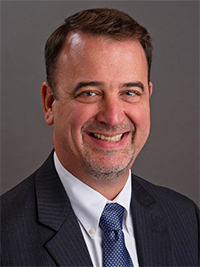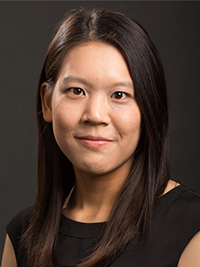The Center for Autism and the Developing Brain, established nearly a decade ago as a collaborative program of NewYork-Presbyterian, Weill Cornell Medicine, and Columbia University Vagelos College of Physicians and Surgeons, continues to make great strides in the evaluation and treatment of people of all ages – from the toddler years to adulthood – living with autism spectrum disorders and other developmental challenges. Under the leadership of Stephen Kanne, PhD, Director, and Sophy Kim, PhD, Director of Clinical and Research Operations, the Center provides the latest advances in diagnosis and treatment supported by a comprehensive research program extending from the lab to clinical trials.

Dr. Stephen Kanne

Dr. Sophy Kim
“One of the major areas of inquiry in the field of ASD is measurement development,” says Dr. Kanne, Professor of Psychology in Clinical Psychiatry at Weill Cornell Medicine. Dr. Kanne has particular expertise in behavioral phenotyping and developing methods for the measurement of ASD symptoms and traits. He is trained in the Autism Diagnostic Interview and the Autism Diagnostic Observation Schedule, Second Edition, and is an independent trainer for both instruments, supervising others in the use of these assessment tools. In 2013, Dr. Kanne developed and co-authored the Autism Impact Measure (AIM), a tool designed to track incremental changes in frequency and impact of core ASD symptoms.
Dr. Kim, an international authority on developing autism assessment tools and naturalistic developmental behavioral interventions, also directs the ASD & Developmental Science Lab at Weill Cornell Medicine. Here researchers are examining developmental and behavioral patterns, such as academic achievement and executive function in children with ASD, incorporating leading-edge behavioral and electrophysiological measures. They are also investigating developmental trajectories of ASD during toddler, preschool, and early elementary school years using newly developed and validated measures such as the Brief Observation of Social Communication Change and Observation of Spontaneous Expressive Language. Dr. Kim’s assessment tools have been used in numerous clinical trials worldwide.
Dr. Kanne and Dr. Kim employ these and other methods considered the gold standard for assessing symptoms and measuring key stages of child development. Many of these tools have been developed and validated in research studies undertaken at the Center for Autism and the Developing Brain.
“It is a collaborative effort,” says Dr. Kim. “We conduct multisite studies using naturalistic play-based observation of treatment response and evaluate language skills in a semi-structured play-based setting.”
“As there can be many reasons why autistic individuals present differently, such as between boys and girls or children of different ages, we assess them differently,” adds Dr. Kanne. “We are able to establish a broad brush stroke phenotype, and in combination with Dr. Kim’s work on trajectories, we are able to more accurately diagnose autism and its type, thereby optimizing decisions about interventions for a particular child.”
Guidance for Clinicians in Times of COVID
In March 2020, as New York City was in the throes of its first major COVID-19 outbreak, Dr. Kanne saw firsthand the challenges clinicians faced as a result of restrictions placed on in-person care where early childhood diagnostic evaluations and timely access to interventions and support services are critical.
In the best of times, an evaluation of an individual suspected of having an autism spectrum disorder is a complex undertaking involving three behavioral symptom domains: social interactions, verbal and nonverbal communication, and repetitive behaviors, as well as the possibility of overlapping neurodevelopmental disorders related to neuroanatomical, neurophysiological, and neuroimmunologic and/or genetic abnormalities. Assessments performed in person are especially important because they require, for example, varying interactions between the clinician and the child, clinician observations, manipulation of physical materials, and conversations.
Stemming from circumstances fraught with concerns for clinicians and their patients during COVID, Dr. Kanne, Dr. Kim, and colleagues from four centers across the country established the International Collaborative for Diagnostic Evaluation of Autism (IDEA) – a virtual group through which clinicians could share their knowledge and expertise in response to COVID-19. Word spread quickly through the autism community, and IDEA grew to include more than 300 members from 10 different countries. The group holds monthly webinars that cover a broad range of issues such as how to use telehealth to conduct autism diagnostic evaluations and caring for transgender patients with autism. Their white paper, published in the March 2021 issue of the Journal of Autism and Developmental Disorders, presents the practices implemented by the centers to facilitate diagnostic evaluations.
At the same time, Dr. Kim began reimagining the diagnostic evaluation process and measurement tools used to assess patients. “Standardized measures could not be used with personal protective equipment,” explains Dr. Kim. “When children and providers wear PPE, it affects the validity of the diagnostic assessment.”
Dr. Kim and her colleagues developed a telehealth-based assessment measure that allows clinicians to expand their reach and increase family access to early intervention services. The Brief Observation of Symptoms of Autism (BOSA) tool, described in the December 2021 issue of the Journal of Autism and Developmental Disorders, is a promising option for remote assessment that can also be used in person. The research team examined psychometric properties to determine optimal use for each BOSA version. They observed the interactions between children and parents in a remote assessment and conducted multiple studies to validate the psychometric measures.
The authors note, “Our intention in creating this measure was to support the clinical and research field to access and deploy the BOSA easily when face-to-face interactions were no longer feasible or safe.” To this end, training and materials have been available free of charge. The training video had over 20,000 views and translation of the materials into five languages promoted even greater availability and access.
“COVID changed the way we think about doing evaluations,” says Dr. Kanne. “While it showed us the need for flexibility in our approach, it also underlined the need to see certain patients in person. Technology is not a magic bullet but it showed us the importance of Dr. Kim’s remote approach when you cannot observe a child interacting with parents in a more formal way in person.”


